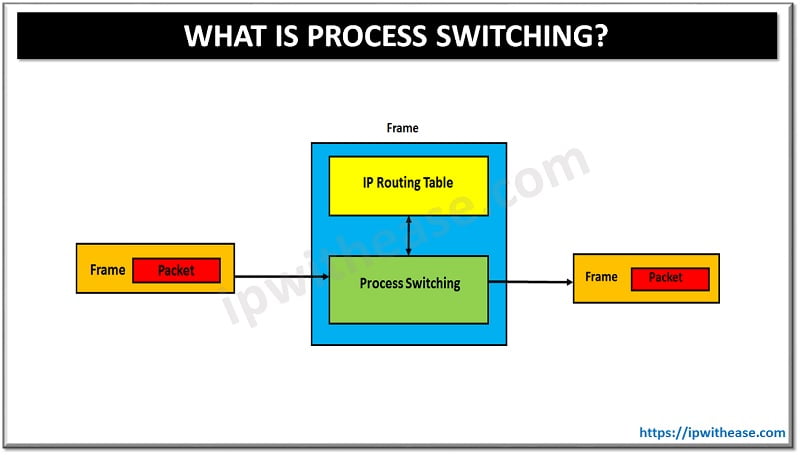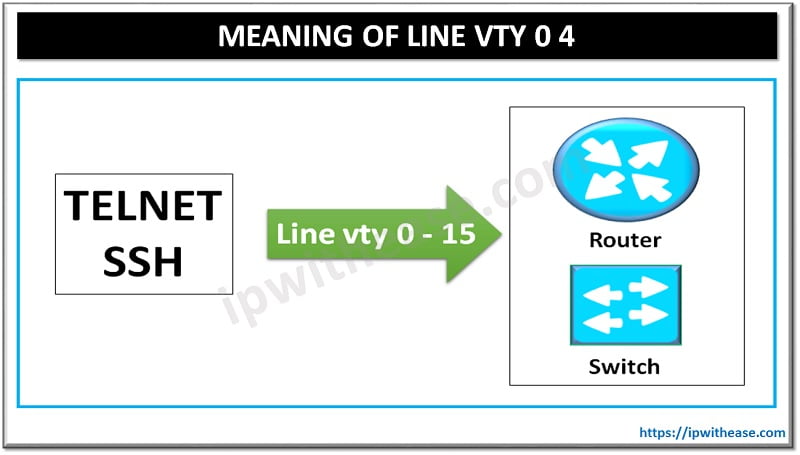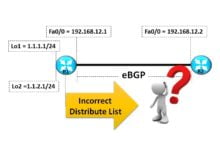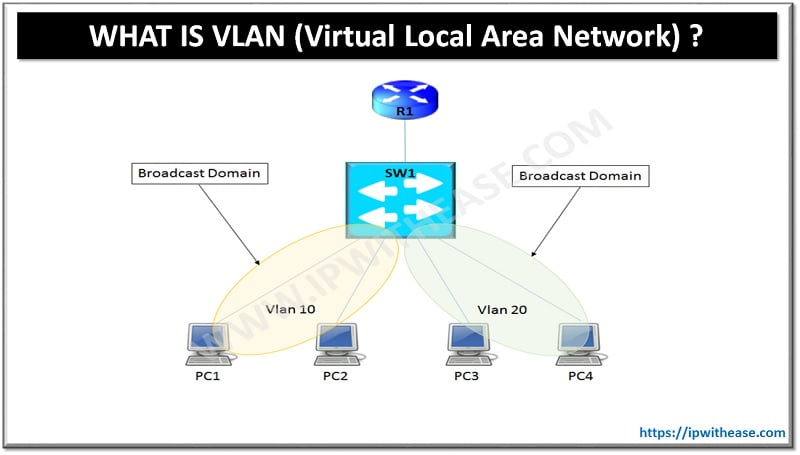
Process Switching is one of the oldest and most robust packet switching techniques. In this article, we will understand the process switching operation, its key features and related configuration –
Topics of Content
- Background
- Definition of Process Switching
- Operation of Process Switching
- Key Points
- Configuration
- Conclusion
Background
In IP Routing, packet switching methods are used to address the primary function of forwarding the packets to the destination. For a router or Layer 3 Switch, to move traffic across the network, it needs to perform two different functions i.e. routing and switching. Routing refers to how a router determines the best path to send the traffic through. This is usually achieved using various routing protocols like EIGRP and OSPF. How packets are moved from the input interface to the output interface is a key aspect of packet switching. There are many packet switching methods, but the most common one is which we will be discussing – Process Switching.
Definition
Process switching refers to the process by which the router’s CPU or processor is directly involved in the forwarding decision. As a packet is process switched through the router, its CPU is responsible for choosing the appropriate process to handle the packet and schedule the running of the process.
Every packet that comes into the router is handled independently and can take a different path to its destination. Process switching therefore allows load sharing across links that are not be utilized. Process switching presents two problems
- The CPU utilization increases because each packet has to be processed.
- Packets from different routes might cause the packets to receive at the destination out of sequence. If the packets arrive out of sequence, the destination host needs to do more work to place the packets back together in the correct sequence, which burns up more CPU time and possibly degrades performance.
Related – Process Switching vs Fast Switching
Operation
Below steps briefly outline the order of operation while packet/data is being process-switched through a router –
- The data arrives on the inbound interface. The router reads the packet and stores it the memory.
- The router performs a lookup in the global routing table (show ip route) for the packet’s destination IP address.
- Based on the outcome of this lookup, the process switches out the packet on a particular interface and adds some information in the IP header. This includes the Time to Live (TTL) field and the recalculation of cyclic redundancy check (CRC) of the IP header. The router finds the next-hop IP address towards the destination by resolving any recursion within routing table.
- The router finds the physical layer header and outbound interface for net-hop device. This information is written onto the packet to forward it to next hop towards the destination. Generally, this involves looking into ARP cache/table or some table that maps a next-hop device to a layer 2 address.
- The router re-writes the physical layer 2 header address to the packet (i.e. frame building).
Key Points
- It effects the performance because every packet is inspected by layer 3 device.
- Increased load on CPU processor.
- In this mechanism every packet get inspected by router/switch processor.
- Load balancing is performed on every packet.
- Packet gets dropped if no routes to specific destination is found.
- Very easy to enable by one command.
Configuration

Conclusion
Process switching is the oldest, slowest and most CPU intensive technique of packet switching.
Related – What is Fast Switching?
ABOUT THE AUTHOR

You can learn more about her on her linkedin profile – Rashmi Bhardwaj



